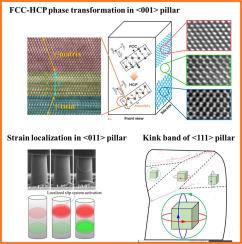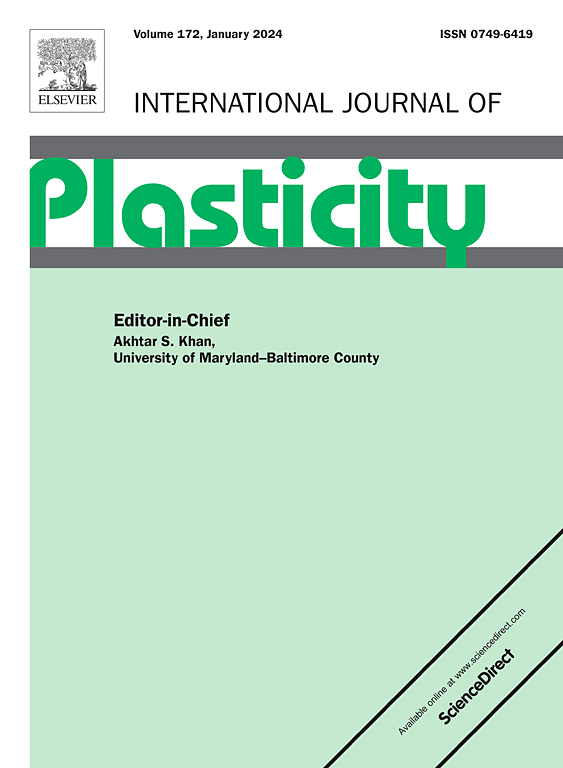Unveiling the deformation micro-mechanism for mechanical anisotropy of a CoCrFeNi medium entropy alloy
Abstract
The equiatomic Cr-Co-Fe-Ni medium-entropy alloy has the face-centered cubic structure. Single crystals of this alloy were tested by in-situ micropillar compression along different loading axes under scanning electron microscope. The transmission electron microscopy characterization and molecular dynamics simulation were incorporated for quantitative analysis of the effects of different crystal orientations on the deformation mechanisms. The <001>-oriented pillar not only exhibited extensive deformation-induced nano twinning, but also has been identified for the first time to undergo the FCCHCP phase transformation at room temperature. The strain localization tendency of <011>-oriented samples was confirmed through uniaxial tests to interpret the significant serration on stress-strain curves. The prominent strain hardening of <111>-oriented pillars was attributed to intense intersection between slip planes as evidenced by the extra density of Lomer-Cottrell locks. Such a high hardening rate has caused subsequent kinking of pillars. Functional division of different regions of kink band was conducted based on Orowan model. In principle, multi-principal element alloys can theoretically be designed and developed to combine a variety of excellent properties, which is an important class of candidate structural materials for advanced engineering systems. These findings provide promising guidance for understanding the mechanical anisotropy and application of these alloys.


 求助内容:
求助内容: 应助结果提醒方式:
应助结果提醒方式:


